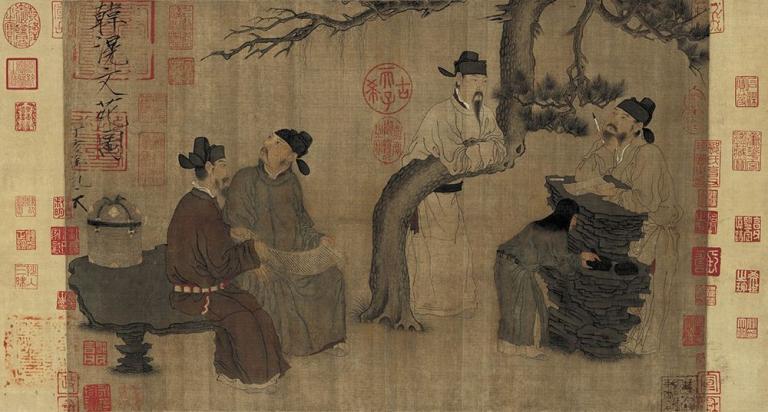Figure Painting in the Five Dynasties
2 min readFigure painting gained new improvement in the Five Dynasties. The Taoist and Buddhist figures were still very popular, but became secular. Portraits of emperors, royal family members and high officials appeared in temple murals. Figure of arhats with ordinary monks as their archetypes were better representatives of the development of religious painting. They became more popular than the sublime and merciful images of Buddha and Bodhisattvas. Development of social economy and urban culture required more paintings depicting urban and rural customs, court ladies, nobles and scholar-bureaucrats, and they became the mainstream subjects in figure painting. Painters under regime of minorities in remote northern areas liked todepict local life style and customs. Some of their paintings about, for example, hunting and horses had perpetual significance in the painting history.

Famous painters in the Five Dynasties include the following: Gu Hongzhong (about 910-980) was from south of the Yangtze River region China,a painter lived in Southern Tang of the Five Dynasties. He was accomplished infigure painting. He was good at observing and memorization. He could depict the psychological and emotional change of the figure. His work Han Xizai at a Night Feast is 28.7cm wide and 335.5 cm. long. Han Xizai was Secretary in the Council inSouthern Tang. However, as he was from the north, he was often put aside by Emperor Li Yu and other officials in authority. Therefore he indulged himself in sultriness and often offer night banquet for friends at home. The painting depicted the scene of his night banquet at home. The painter was sent by Emperor Li Yu to Han’s residence to spy on his life. He later painted it according to his memory. The distinct five sessions show Han Xizai listening to the music, watching dancers, taking a rest, blowing string instruments and seeing guests off respectively.I successfully demonstrated Han Xizai’s depress and soreness in his search of salvation in sultriness.
Zhou Wenju was born in Jurong, Jiankang(Jurong in Jiangsu today). He also lived in Southern Tang of the Five Dynasties. He had learned from Zhou Fang in Tang dynasty and excelled him later. He was accomplished in paintings of Buddhism and Taoism, figures, carriages and horses, houses and landscapes, especially the depiction of court ladies’ life. His works Playing Chess behind Double Folding Screens and Within the Palace were handed down till today. The former painting depicted the scene when the second emperor of Southern Tang dynasty Li Jing was playing chess with his three younger brothers. As there was a folding screen painted on the folding screen in the painting, it was titled “double folding screens”. All figures in the painting were lifelike and vivid.









